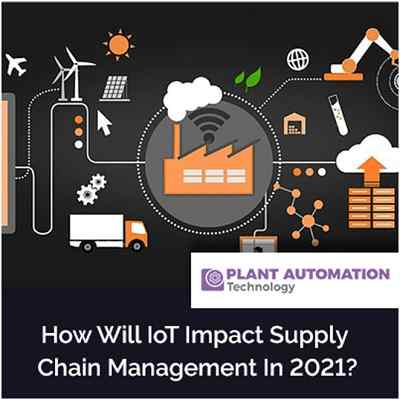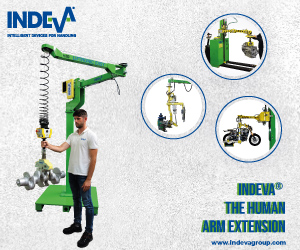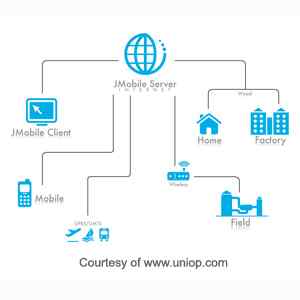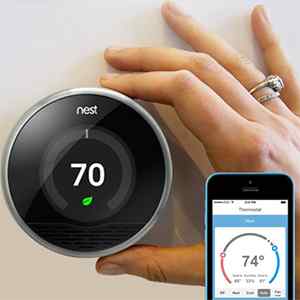Articles
How Will IoT Impact Supply Chain Management In 2021?

The term "IoT" or "Internet of Things" is widely used in tandem with supply chain management. Several industries are facing a lot of challenges and limitations concerning supply chain management (SCM). SCM includes all those management activities related to the flow of goods in an organization - from the procurement time of raw materials to distribution of finished product to the final consumer to make sure the costs are minimized. The supply chain activities cover everything from product development to logistics, including sourcing, inventory and warehouse management, production and manufacturing, transportation, and shipping.
Yet, a lot of challenges are faced by supply chain management regarding supply chain management. A few of the challenges are:
- Ineffective supply chain risk management
- Inefficient stock handling
- Improper data handling
- Lack of visibility of assets
- Transportation/logistic mismanagement
To overcome these challenges, IoT has proved to be one of the upcoming optimal solutions. So, what is IoT? For those who aren't aware of it, IoT is a network of electronic devices connected by a wireless network that can be accessed digitally from anyplace. "Things" here refer to objects that have been assigned an IP address and can collect and transfer data over a network without any intervention or manual assistance. It's estimated that the total global worth of IoT technology could reach up to $6.2 trillion by 2025.
The prospective for applying IoT in supply chain management is huge. It enables better control over the logistics and helps objects to communicate properly. It can bring in smart ways of managing things and process efficiency. It also contributes to real-time visibility of inventory which brings transparency to an organization. IoT will not only facilitate SCM with real-time visibility wherein managers can track inventory at any given point of time, but also, will allow mobile computing in SCM.
The IoT devices use sensors to assess particular features of the world around them, like humidity, light levels, location, movement, temperature, speed of movement, handling, and other environmental factors. They come in several form factors including smart devices, RFID chips, and mobile sensors.
In this article, we present to you some of the most prominent effects of the IoT supply chain revolution.
Enhanced Operational Responsiveness & Hands-on Maintenance
Whether you run a transportation company, managing a warehouse, or you are a shipping company, your success depends greatly on infrastructure. Now, that another sub-branch of IoT known as IIoT (Industrial Internet of Things) has emerged, it combines all the assets such as electric forklifts and delivery trucks, HVAC systems, robotic sorting mechanisms, into a single network of connected devices.
This lets companies gather real-time data related to mechanical and electronic assets. Consequently, any action can be taken before a machine/part stops working. This hands-on maintenance reduces downtime and enhances production. For example, when sensors are placed inside a conveyor belt, they'll rapidly pick up and notify truck drivers about any apprehensive vibrations in the truck tires so they can fix it before it can wear out. Such a mechanism will lead us to fewer interruptions and delays, and business keeps functioning even when something goes erroneous.
Running retail stores with IoT
Customer movement and behavior in retail stores can be monitored by combining RFID-tagged products with closed-circuit TV cameras. The store that's connected can trace how shoppers move from aisle to aisle that could provide insight into buying behavior. With the information on buying behavior, the retailers would be provided with user-specific deals, streamlining operations, and planning dynamic pricing.
By making appropriate arrangements of manpower and stock, the overall retail operations can be streamlined by the shopper-centric movement data.
Smarter Freight Stowage
We usually go to a shop and buy a product without knowing how many various stages it goes through before it reaches the store from where you've purchased from. The supply chain manager holds the complete responsibility to make sure all the cartons inside the containers reach their destination starting from factory to warehouse to shipping containers, at the right time and that too in good condition. This might be easy to say than doing it.
You can easily achieve this goal using technologies like IoT, machine learning, and big data analytics. The advanced warehouse management systems can make freight decisions, while robots are used to separate products that reduce human error in the process.
Automatic Defect Detection
Identifying and eliminating defects, conducting standard inspections used to be an intimidating task but not anymore. Technology has taken over the human factor and automated this process to reduce the risk of human errors. Most of the companies are already utilizing artificial intelligence to drive out defective products before it reaches their last stage. This would not only improve the safety of the products but is also a great move from an efficiency point of view.
Demand Forecasting
Companies in the past didn't have smart tools that can provide them with useful insights to make better decisions. Of late, companies are using their database and the information they have to set up new routes and extend their reach by opening up new distribution centers. All the information from preferences, customer purchase history, and even expected future purchases are taken into account and make sure there's an efficient flow of products on their shipping routes. This data is obtained from sensors placed in your stores. Few companies even gather data from repair shops and manufacturers to get a better idea about how customers interact with their products and areas of service improvements they need to focus on.
| Also Read: The Impact of Industrial Automation on Global Supply Chains: Advantages, Challenges, and Future Developments |
Challenges of using IoT in the Supply Chain
There might be enormous benefits of using IoT in the supply chain. But knowing about the challenges of using IoT in the supply chain is equally important.
IoT devices rely on good network connectivity to work well. They need to be able to send their positions to GPS satellites and other types of IoT devices may need Wi-Fi, Bluetooth, or some other connectivity. They would not work as effectively in areas with lots of electrical or radio frequency interference. They also rely on being installed and powered properly. They should only be attached, handled, or removed by trained people. Besides, the IoT devices can be easily damaged if they're not used correctly. So, it's also important to use the right IoT for the right job.





